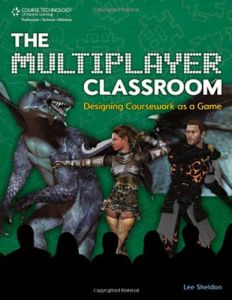Join getAbstract to access the summary!

Join getAbstract to access the summary!
Lee Sheldon
The Multiplayer Classroom
Designing Coursework as a Game
Cengage Learning, 2011
What's inside?
Make learning fun by gamifying your classroom.
Recommendation
Professor Lee Sheldon reaches out to his students by bringing gaming into the classroom. Sheldon describes how he successfully converted four of his college courses into “multiplayer classrooms” or “MCs.” In an MC, students learn collaboration, problem-solving skills and a whole new vocabulary. MC classes show gains in attendance, participation and enthusiasm. This is not a how-to manual, but teachers can apply Sheldon’s ideas to their classrooms. getAbstract recommends his innovative approach to teachers, professors and school administrators.
Summary
About the Author
Professor Lee Sheldon directs the Games and Simulation Arts and Sciences Program at Rensselaer Polytechnic Institute, where he teaches courses on game theory and design.


















Comment on this summary